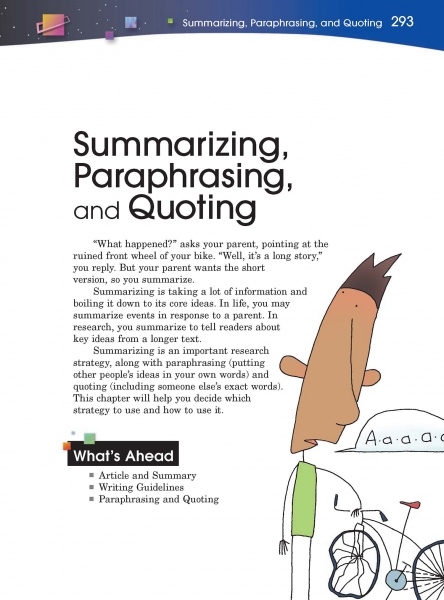Page 293 from

Start-Up Activity
Provide novels to your students, allowing them to read the summaries on the backs. After they finish, ask which of them would want to read the novel after reading the summary. Why or why not? Then ask what features of the summary caught their interest—or turned them off.
Point out that novels have summaries so that a person can decide whether or not to read the full piece of writing. When students summarize articles and larger works, they are also showing their understanding of the ideas they have read about.
Think About It
“This report, by its very length, defends itself against the risk of being read.”
—Winston Churchill

Start-Up Activity
Provide novels to your students, allowing them to read the summaries on the backs. After they finish, ask which of them would want to read the novel after reading the summary. Why or why not? Then ask what features of the summary caught their interest—or turned them off.
Point out that novels have summaries so that a person can decide whether or not to read the full piece of writing. When students summarize articles and larger works, they are also showing their understanding of the ideas they have read about.
Think About It
“This report, by its very length, defends itself against the risk of being read.”
—Winston Churchill

